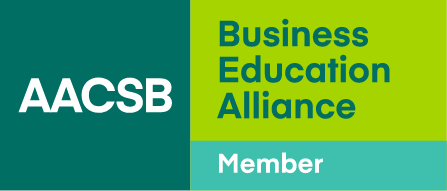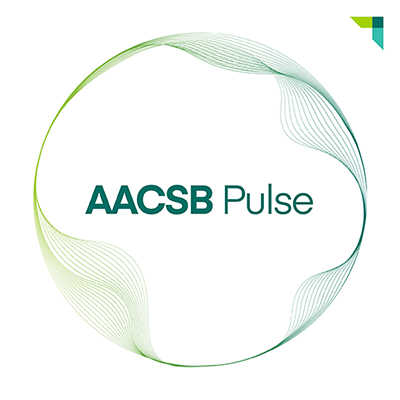AACSB, GMAC, EFMD to Collaborate on Data and Research
AACSB has signed a memorandum of understanding (MOU) with the Graduate Management Admission Council® (GMAC) and European Foundation for Management Development (EFMD) to coordinate and expand our joint data and research initiatives. By collaborating, the three organizations intend to benefit the business education industry as well as our respective members.
Although the MOU only serves as a starting point for our efforts, it is easy to envision the possibilities of collaboration. By aligning and combining data across the organizations, we will be able to conduct better research about the trends in our industry. By coordinating our survey definitions, we will be able to improve the data available to prospective students, employers, and others who want to know more about business programs. By working together, we will be able to encourage and enable the broad range of organizations in our ecosystem to improve the quality and transparency of the data and information they provide.
Why now? There are three sets of changes that make this MOU especially exciting right now. First, the business education industry is evolving. Business schools are innovating more than ever, creating programs that connect people to new and emerging career possibilities. Pathways are being created to integrate education and experience to help students develop skills and earn credentials such as certifications, specializations, and badges. There are new players in our industry, including MOOC platforms, lead generators, credential aggregators, and more—all collecting, producing, and/or using data about business education.
Definitions that once served the industry well are becoming less useful. Ask, “What is MBA?” for example, and you will receive a much wider variety of responses than ever before. It’s no longer just full-time, part-time, and executive MBA programs. MBA programs are online or hybrid, combining web-based and residential learning. They are accelerated and jointly offered by business schools in different countries. They are focused on particular industries such as health care, combined with other professional fields such as computer engineering, and defined by purpose such as sustainability. Absent a shared understanding of what defines the variety of programs available, it is difficult to study trends, facilitate comparisons, and help schools with strategic planning.
Second, information technology is advancing, enabling educational organizations to collect, use, and share data in new and more powerful ways. Using updated versions of data analytics software, we are able to combine data across organizations to reveal fresh insights. More powerful search platforms and artificial intelligence are enabling students to more directly find and connect with the programs and schools that meet their needs based on data. Similarly, social media has been redefining the way information is shared. Taken together, we will need to work collaboratively to fully exploit advances in technology to benefit the industry.
Third, the collaborating organizations are changing. For example, EFMD, AACSB, and GMAC are much more international now than ever before and are facing the complex challenges associated with sharing data across and about countries and regions that can be very different. An MBA, for example, can mean different things in Brazil, France, India, and the United States. Similarly, rules about data privacy and transparency can be very different from country to country and are becoming increasingly important, making it more and more beneficial for the three organizations to share knowledge gained from their data experience worldwide.
The roles of the organizations are also changing. For example, AACSB has just announced a new mission, which is to “foster engagement, accelerate innovation, and amplify impact in business education.” The new mission will, among other things, compel AACSB to expand its efforts to connect academia to business practice. By collaborating with GMAC and EFMD, we may be able to create new opportunities to reach practitioner audiences with more relevant information about management education and development.
We are in an exciting time for business education—a time of transformation. By working together on data and research, GMAC, EFMD, and AACSB can help shape this transformation to benefit society and business, as well as enable students, employers, and business schools to achieve their goals and aspirations.






